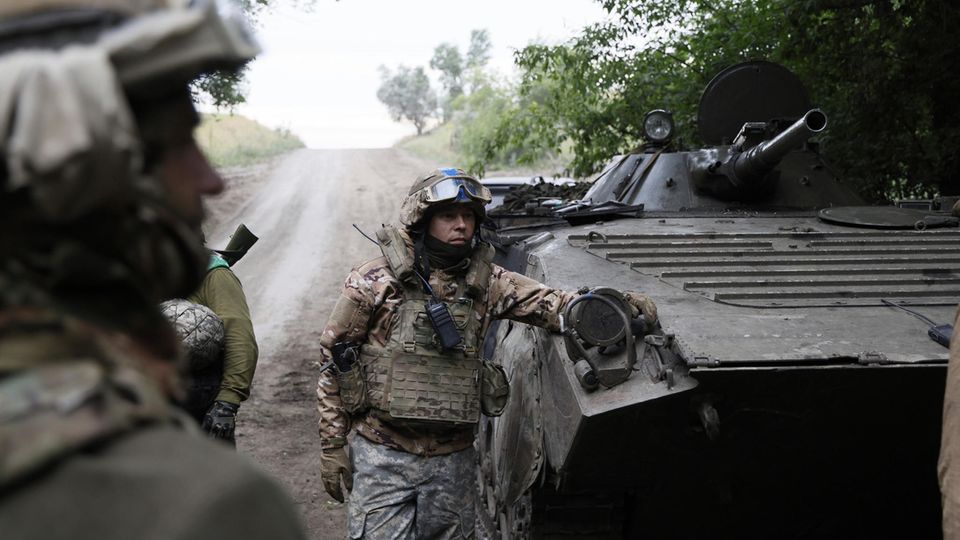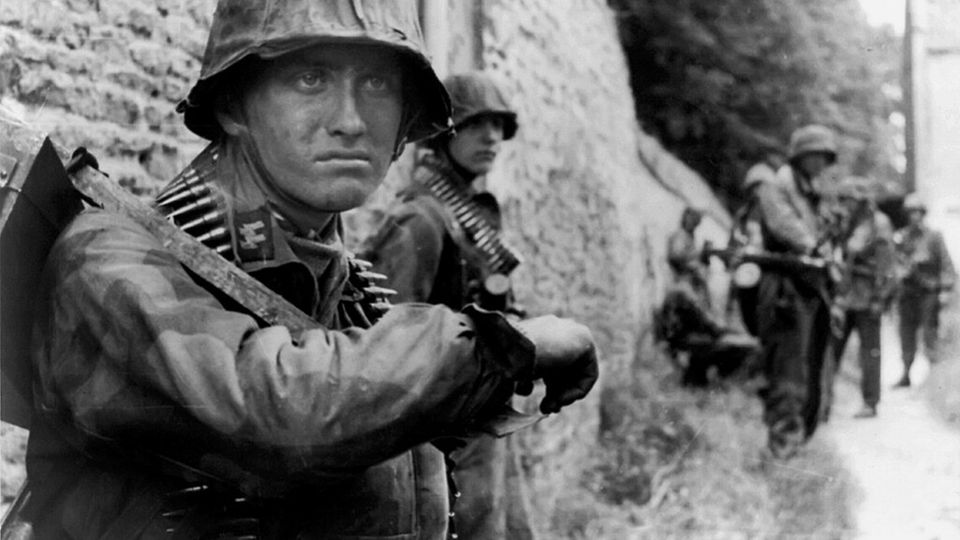Tactics in Ukraine
The hedge war – how the Ukrainians storm the Russian trenches
Soldiers can only use what they can carry.
© Anatolii Stepanov / AFP
Initially, tanks rushed towards the Russian positions, now stormtroopers are stalking the trenches. They use a special feature of the landscape: long strips of trees along the fields.
At the beginning of the summer offensive, Ukrainian forces advanced with armored battle groups and frequently got stuck in minefields. And then the broken-down vehicles were shot up. These losses were unsustainable in the long run, so change Kyiv tactics.
Small infantry groups
Instead of sending mechanized forces into the field, assault groups of infantry are now deployed. And they take advantage of a special feature of the landscape – the hedges. In Germany, too, rows of trees bordering fields are known. In Soviet times, the fields in Ukraine were far larger than in Germany. Here, the advantages of mechanized agriculture were fully exploited, and there was a penchant for superlatives. But when it was dry, the large areas also led to large soil losses through erosion – so tree protection strips were laid out. These are narrow groves at the edges of the fields. This is where the fights focus. The rows of trees dominate the open field in between, and their green canopy at least partially protects them from detection by drones. The Ukrainian troops advance along these rows of trees and try to throw the Russians out of their trenches. The smaller groups always manage to surprise the Russians. In addition, the tree strips are not mined like the fields.
Jumping from hedge to hedge
Once a row of trees has been conquered, the opponent must retreat to the next. Due to the size of the fields, this makes up several hundred meters of territory. Ukraine loses fewer armored personnel carriers and main battle tanks because they don’t take them to the enemy. On the other hand, the Ukrainians manage to knock out Russian tanks again and again. With the heavy equipment, the fighting shifts to the artillery. Both sides try to use drones to track down and eliminate the enemy’s turrets. It is difficult to say what role the artillery played. The supreme commander of the Ukrainian armed forces complained that the Russian troops were firing ten times more shells than his men had at their disposal. At the same time, British intelligence announced that the Russians were suffering from a lack of artillery shells.
Armored formations are vulnerable
How effective is the new tactic? By deploying small, surprise-operating groups of infantry, Kiev avoided the unnecessary casualties suffered by armored groups in open country. But with that, the hope of a breakthrough and rapid gains in territory disappears. More than jumping from hedge to hedge can hardly be achieved.
This shows how difficult it is for mechanized units in the Ukraine war. They are often spotted on the approach to the front line and then attacked by artillery and drones. Even in their function as infantry support tanks or armored personnel carriers, they often cannot be used. Foot soldiers, supported by drones and artillery, bear the brunt of the battle.
Infantry combat is not a panacea. It can be assumed that the Russians will adapt to the new tactics. For example, in which they increasingly mine the forest strips and provide them with booby traps. Their helicopters have already been adapted, and videos show them firing at the hedges. However, it will hardly be possible to attack the small groups far in front of their own positions, as is the case with the conspicuous armored columns.
Bocage fighting 1944
In historical comparison, the battles are reminiscent of Normandy in 1944. The cultural landscape of the Bocage borders on the Allied landing zones. Here, too, hedges limit the much smaller fields. These field boundaries were laid out 2000 years ago. The field stones were collected at the borders. Over time, plants and stones formed veritable ramparts, which in turn were overgrown. In the Battle of Normandy, these hedges offered protection to the Germans from the Allied Luftwaffe. The wall hedges acted like a natural ditch system and strengthened the position of the German defenders. Due to the strong superiority in troops and material and their absolute supremacy in the air, the Allies were finally able to break out of the Normandy bridgehead. But that took time. The landing took place on June 6, 1944, the breakout did not succeed until the end of July 1944.




